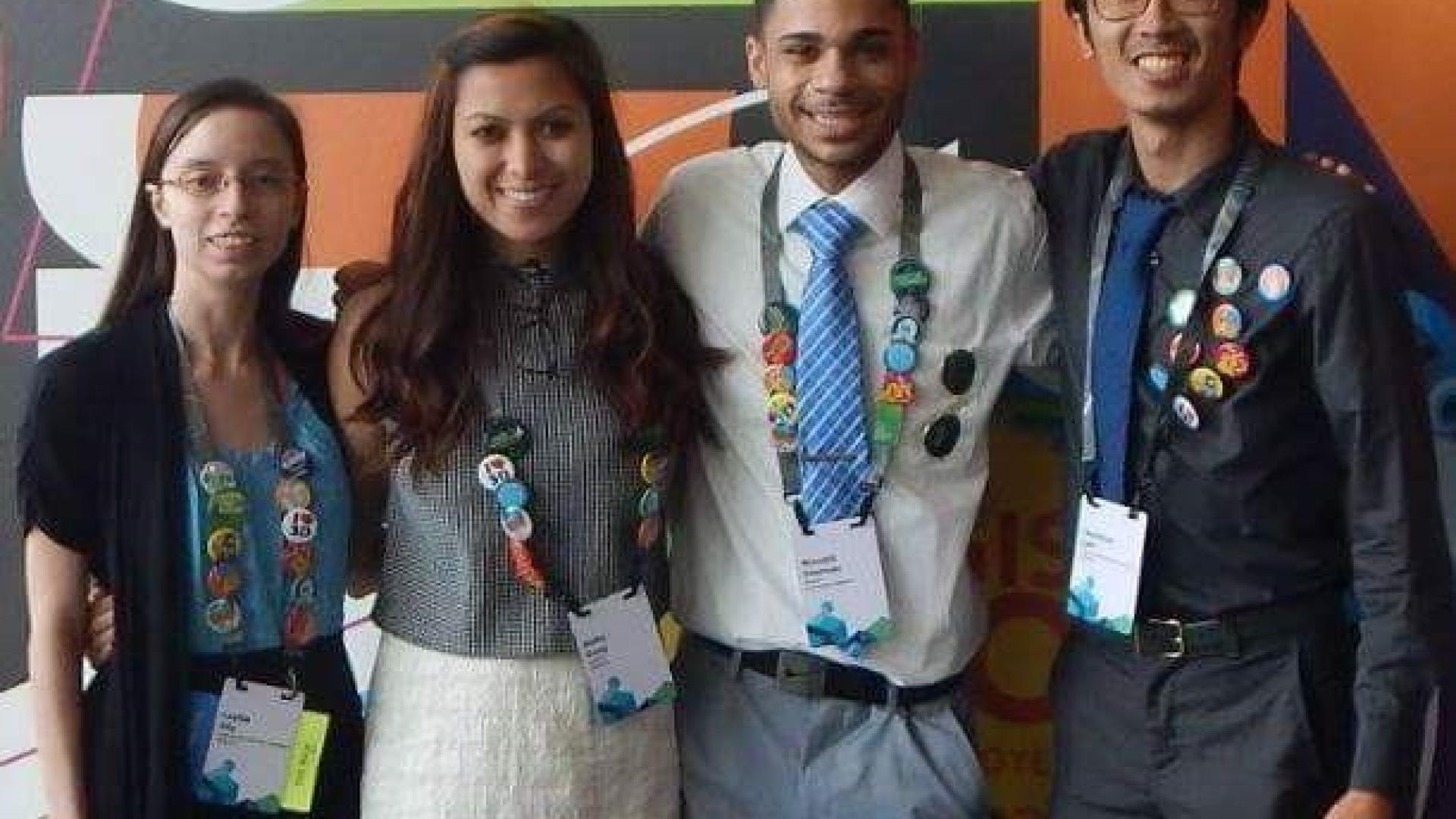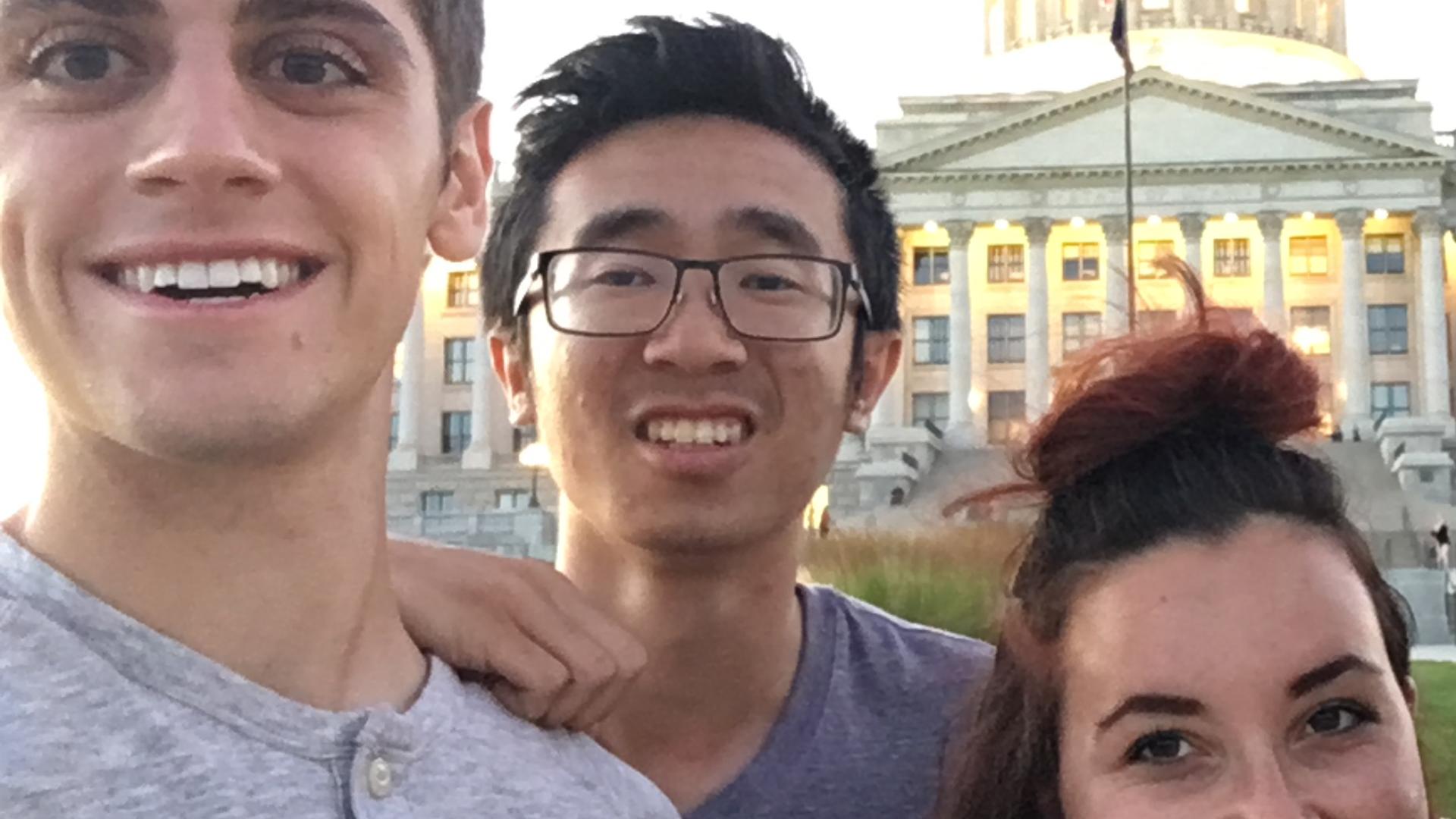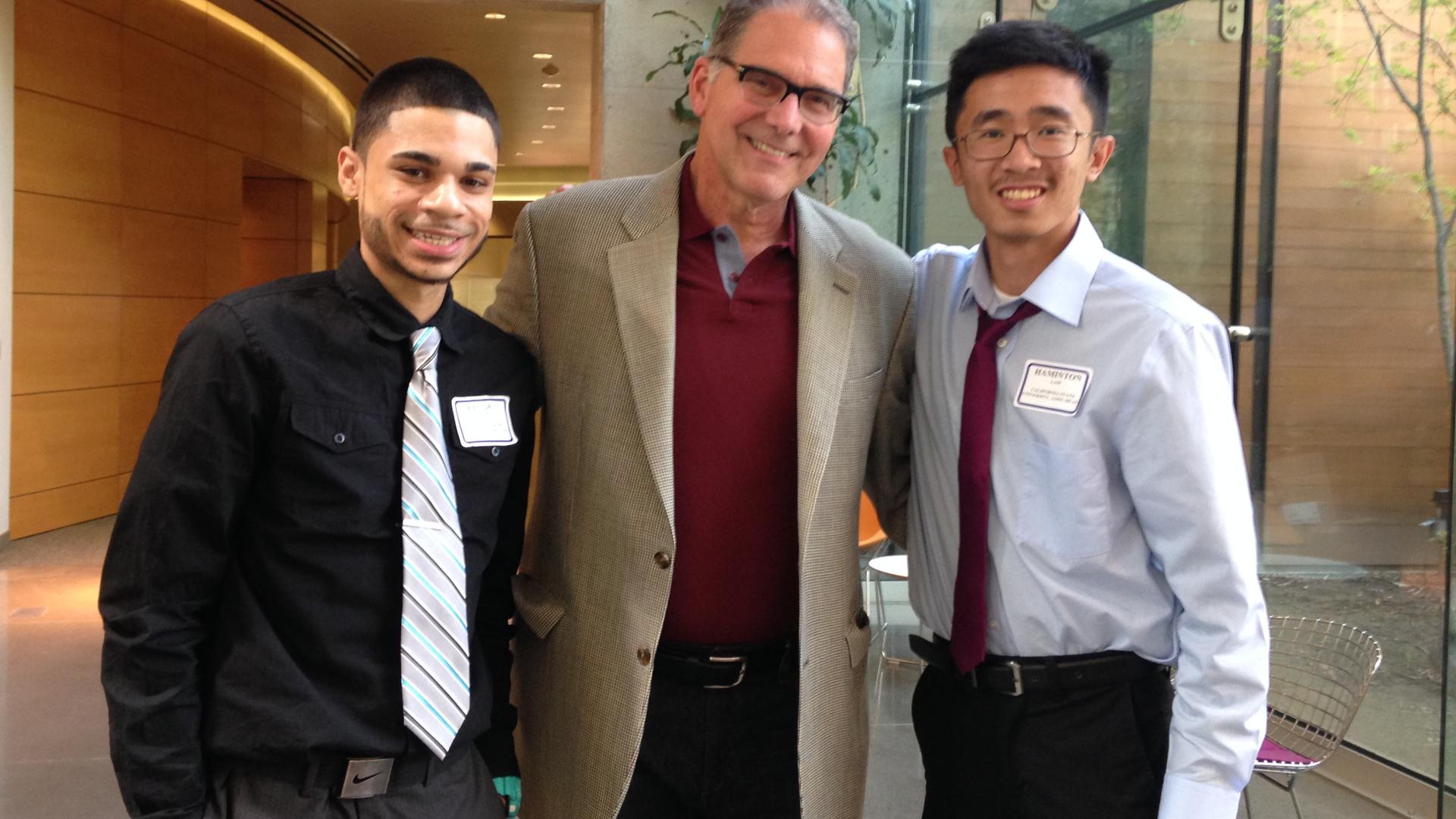Haminton Lam ‘18
Starting freshman year I jumped right into the mystery train of my major, not knowing exactly what it had to offer, but I knew I liked it. Geography involved maps, and continents, and countries, and stuff, right? I wasn’t correct. But I wasn’t wrong, either.
My college life revolved around figuring out what I was doing with my major and what cool clubs I could join. Walking through Club Week of Welcome, I stormed through dozens of unsolicited flyers waved at my face before I discovered Circle K International. The social volunteer group was affiliated with Kiwanis Key Club in which I had been a member of in high school. Volunteering in local communities taught me humility, and socializing with others taught me the value of friendship and networking.
As I became more familiar with the material, the importance of Geography and GIS (Geographic Information Systems) came to fruition. The principle of geography does not stem from facts and cultural events around the world. The deeper meaning behind it comes from the ideology of space between objects and how and why they are related, and what themes can be inferred. It took me about two years to understand this. Needless to say, I was satisfied with my social life and academic performance.
I applied to many universities but eventually narrowed down my options to San Diego State University and CSULB. San Diego was surely a lock when I received the acceptance letter. I mean, it’s a highly-renowned party school AND it offers a Master’s program for my rare major. What’s not to like? I got a taste of its campus with an incredibly helpful tour, but for some reason it just didn’t click. The campus is stunning--buildings are majestic, with fancy clock towers that ring every top of the hour--but I felt like it just wasn’t for me. However, when I visited this campus, I went on a self-guided tour (thanks for the warm welcome, CSULB), and I thoroughly enjoyed the soft, quiet atmosphere. This campus is smaller than SDSU, but I was drawn to the brick architecture and the open green space. If there’s one thing that completely attracted me to enroll at the Beach, it must have been the luscious plant life and abundance of trees, shrubs, and flowers that complement each and every sidewalk and pathway on campus. CSULB felt like home, and I’m glad to have established a final decision to matriculate at this wonderful school.
I’m going to start a transportation consulting firm. GIS is an emerging field in a rapidly growing technological society. It may not be as advanced as flying cars and artificially intelligent robots, but for that reason, it’s more achievable in the short term and is sustainable in the long run. Analytical mapping is a humble and growing demand in a world where data must be recorded and normalized for assessment and implementation. Transportation is one of a hundred examples I could think of that fits that criteria.
My wonderful professor, Suzanne Wechsler, notified our cohort about a ‘Dinner with 12’ event, a semi-formal meeting hosted by Steve and Nancy Yoho in which we can discuss our academic and professional goals with like-minded colleagues, while munching on creamy chicken and chewy chocolate desserts. Fascinated by the opportunity, I promptly RSVP’d the Alumni office. I knew that I wanted to get involved because this was my chance to learn about Geography in the perspective of an experienced professional. Sharing my career journey was just as important as hearing the stories from other individuals.
Sending cash in an envelope for the Beach Pride and Tradition package isn’t what the Alumni Association is about. Money isn’t as valuable as the continuous connection and much-needed support CSULB alumni bring to the organization. Donating to the Alumni Association is a token of appreciation from us alumni to the school for the education and memories that will follow us indefinitely with our future careers. By “giving back” we’re not mailing a check--we’re sharing our positive experiences for upcoming generations to come.
I joined Geography Student Association during my freshman year in 2013. I later became President for the 2015-16 and 2016-17 school years. We attended geography lectures at Los Angeles City College, volunteered faithfully with Bolsa Chica Conservancy, hosted Cultural Nights (eating at numerous local restaurants of different types of cuisines around the world), engaged in interactive activities pertaining to our ‘Country of the Month’ (made origami frogs and swans when Japan was ‘Country of the Month’, etc.), and promoted geography during ‘Geography Awareness Week’ by exhibiting a map gallery on campus.
Professor:
Michael Shensky is a young, passionate Geography professor who teaches GIS. His method of presentation is fresh, unique, and easy to understand. He always explains concepts with vivid detail and explanation that make it easy for us to wrap around the understanding of a particular subject. Not only that, but he always makes learning fun. In order to grasp the idea of learning how to configure domains in a software, we had to go around campus in groups and collect locations of emergency phone poles and stations, and we ourselves came up with our own attributes for those points and our own domains. Mr. Shensky is the person I look up to as an aspiring GIS professional.
Class:
GEOG 304: California - Norman Carter. I value classes that enrich student learning with field trips because that’s the material that always sticks. We took a trip to Chinatown in downtown LA, and I learned a lot about its cultural erosion and economic struggle. Whenever I pass by Broadway and College St, I ponder about the stores here and how successful they were in the 60s. It is sad to learn about the dying tradition and lack of tourism that has been haunting this area since the new millennium, but it is valuable knowledge nevertheless. Understanding this impact and personally speaking with a struggling business owner about the dilemma are things that are never taught in school, but learned
Spot on Campus:
I just really like the center quad. I feel like it’s the most iconic part of campus, more so than Brotman fountain. It’s a serene landscape of strolling students and friendly nearby exchanges that really fulfills the college lifestyle vibe. Sometimes, I study on the benches near PH-1, and my friends usually bump into me. Once I set up my hammock between the palm trees near Prospector Pete statue, and I felt completely zen.
Quotes & Verses: “Whatever you are, be a good one.”
― Abraham Lincoln








